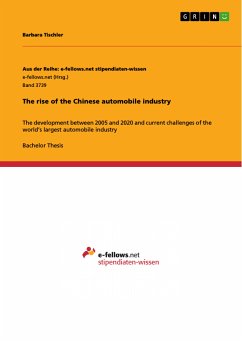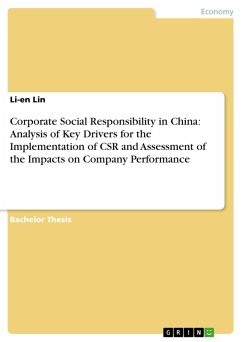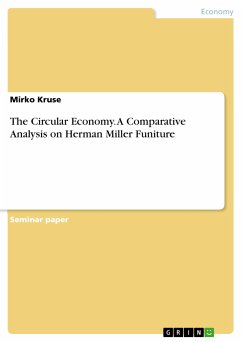Seminar paper from the year 2020 in the subject Business economics - Miscellaneous, grade: 1,3, University of Applied Sciences Trier, language: English, abstract: The aim of this paper is to trace China's increasing integration in the world economy. In this context, the developments of the country's foreign trade policy as well as those of the trade and the investments will be examined. Subsequently, the future prospects of China's foreign trade will be the focus of attention, with particular reference to the country's monetary regime, its Going-out strategy and the regional economic integration in Asia. The following remarks will be devoted to the key events that have paved the way for China's changing role in the global economy in the 21st century. Finally, the most recent, forward-looking measures taken by the Chinese government will be discussed, which are essential for strengthening China's international presence and its competitiveness. After a brief insight into the downside of China's global interconnection, the work is rounded off by a conclusion. When the Chinese government under Deng Xiaoping initiated the Chinese policy of "opening up to the outside world" in 1978, no one could have foreseen the dynamics with which this modernization course would continue or that it would change China's influence on world markets and its perception in the international environment so markedly. The opening policy in the 80s and 90s was characterized by a step-by-step development according to the principle: crossing the river from stone to stone. Thus, China gradually developed from one of the poorest nations to today's second largest economy, to which a significant role is attributed worldwide. Not only as a location for investment, but also as an international competitor for markets and resources.
Dieser Download kann aus rechtlichen Gründen nur mit Rechnungsadresse in A, B, BG, CY, CZ, D, DK, EW, E, FIN, F, GR, HR, H, IRL, I, LT, L, LR, M, NL, PL, P, R, S, SLO, SK ausgeliefert werden.









